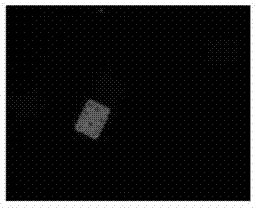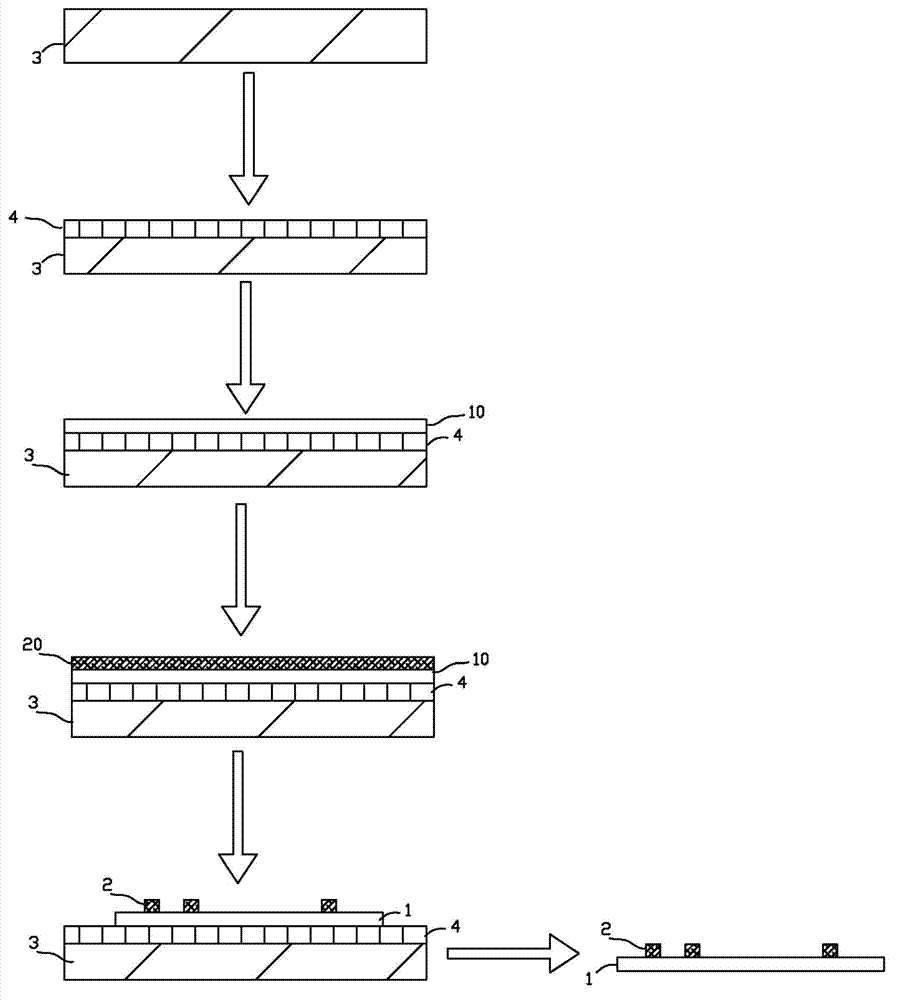Coding suspension microchip and preparation method and application thereof
A microchip, coding technology, applied in the direction of chemical reaction of materials for analysis, chemiluminescence/bioluminescence, etc., can solve the problems of difficult operation, environmental pollution, high cost, etc.
- Summary
- Abstract
- Description
- Claims
- Application Information
AI Technical Summary
Problems solved by technology
Method used
Image
Examples
preparation example Construction
[0063] refer to figure 1 , the preparation method of the coded suspension microchip may include the following steps:
[0064] (1) forming an Al sacrificial layer 4 on the substrate 3;
[0065] (2) SiO is formed on the surface of the sacrificial layer 2 layer 10;
[0066] (3) forming a material layer 20 that is sufficiently opaque to visible light on the surface of the transparent material layer;
[0067] (4) Perform photoresist coating, light development, etching, and cleaning on the material layer that is sufficiently opaque to visible light in sequence, and form an opaque planar microstructure used as a graphic identification code on the material layer that is sufficiently opaque to visible light;
[0068] (5) Select a solution that can specifically dissolve the sacrificial layer (for example, dilute hydrochloric acid, but not limited thereto), and immerse the device prepared in the preceding step (4) in the solution to peel off the substrate to obtain the target product....
Embodiment 1
[0078] Example 1 Detection of multiple nucleic acid amplification products in biological samples (nucleic acid detection)
[0079] Combined with conventional polymerase amplification reaction (PCR) technology, the amplification of multiple template molecules in the same sample can be easily realized by using the coded suspension microchip. Since there is no need to use multiple fluorescent channels to distinguish different amplification products, this application avoids the limitation of the number of fluorescent channels in existing multiplex PCR instruments (generally only 4), and can significantly increase the throughput of PCR; at the same time, it does not require Specially design and synthesize multiple probes linked to different fluorophores, and there is no need to use expensive multi-channel real-time quantitative PCR instruments, which can greatly reduce the cost of use.
[0080] Implementation steps:
[0081] First, the number of different templates to be detecte...
Embodiment 2
[0088] Example 2 Label-free multiplex detection (nucleic acid detection) using molecular beacon probes
[0089] For label-free detection without amplification reactions, molecular beacons known in the art can be used as probes. It is characterized in that the detection signal can be directly triggered by the binding event of the target and the probe without adding additional indicator.
[0090] Implementation steps:
[0091] The probe is determined according to the specific conditions of the nucleic acid to be detected in the sample. Samples that may be used with the method include, but are not limited to, solutions, cell extracts, whole blood, serum, urine, saliva, forensic specimens, and the like. A specific molecular beacon is designed for the sequence of each nucleic acid to be detected.
[0092] Firstly, the coded suspension microchip required for detection is prepared, and corresponding probes are modified on its surface. Its specific process is as described in Exa...
PUM
 Login to View More
Login to View More Abstract
Description
Claims
Application Information
 Login to View More
Login to View More - R&D
- Intellectual Property
- Life Sciences
- Materials
- Tech Scout
- Unparalleled Data Quality
- Higher Quality Content
- 60% Fewer Hallucinations
Browse by: Latest US Patents, China's latest patents, Technical Efficacy Thesaurus, Application Domain, Technology Topic, Popular Technical Reports.
© 2025 PatSnap. All rights reserved.Legal|Privacy policy|Modern Slavery Act Transparency Statement|Sitemap|About US| Contact US: help@patsnap.com



